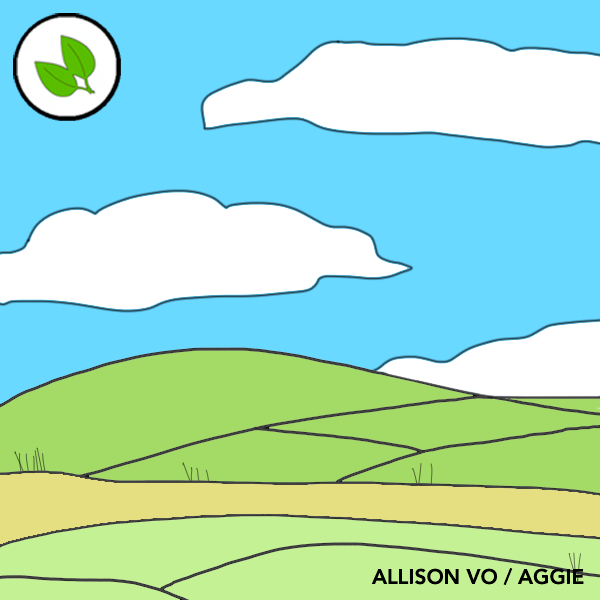County organizations hold free trainings to promote sustainable farming practices
By EMMA CONDIT — city@theaggie.org
The Yolo Carbon Farm Partnership is a collaborative effort between multiple organizations to support and promote sustainable farming practices. The groups involved include the Yolo Land Trust, the Yolo County Resource Conservation District (RCD), The Center for Land-Based Learning and The Carbon Cycle Institute.
Conor Higgins, a project manager at Yolo County RCD, discusses the goal of this plan.
“Carbon farm planning centers around trying to sequester carbon into your soil and decrease greenhouse gas emissions,” Higgins said. “Growers that have interest in that are the ones that we’ll often work with. Many growers already do [some carbon farming]: planting cover crops, applying compost [and] trying to till less or not at all.”
The organizations hosted an introductory workshop on Feb. 22 to overview carbon farming and allow farmers to share their experiences. During the workshop, speakers shared information about carbon farming and highlighted the long-term benefits of carbon sequestration.
Since the rise of large-scale and industrial agriculture, carbon output has increased exponentially, as shown in the workshop. Agriculture is not the reason for high greenhouse gas emissions but can help to mitigate the overall climate impact.
Jeff Creque, the director of Rangeland and Agrosystem management at The Carbon Cycle Institute, noted that carbon is harmful in the atmosphere, but can benefit crops.
“Carbon increases an ecosystem’s ability to hold water,” Creque said. “The loss of soil carbon has doubled the effects of drought in California and the southern United States. We can’t decarbonize agriculture because agriculture is extremely dependent on the carbon in the biosphere.”
Carbon farming practices include planting cover crops, reducing tillage, planting windbreaks and hedgerows and conducting wild grazing. This collection of practices can reduce greenhouse gases, improve water quality, increase agricultural production and longevity and create wildfire resilience.
Higgins discussed the barriers that farmers face when implementing carbon-farming practices.
“It can be a cost thing,” Higgins said. “If people want to reduce tillage [the preparation of soil to be farmed], no-till equipment can be just an initial cost. If they’re buying seed for cover crop, [a crop planted to protect and cover the soil, not to be harvested], it’s finding labor then to do it. I know some folks have concerns like ‘is my cover crop going to be impacting my actual crop? Am I gonna waste water on that?’ If you’re not going to make money from carbon sequestering, there’s even less incentive.”
He commented on the role this project plays in spreading the word about carbon farming.
“This series is an early action plan,” Higgins said. “This is to increase the scale and pace of [carbon farming] and provide a resource and model to farmers to say ‘this is how it can look.’ We want to demystify it. We’re here to help.”
Participation in these workshops is voluntary for farmers who want to partake in carbon farming. There will be an in-person field day on March 7 at the Center for Land-Based Learning’s Maples Farm in Woodland for anyone, farmer or not, who is interested in learning more.
Heather Nichols, a director at Yolo County RCD, explained that farmers play a large role in this change.
“You may be one small farm doing this yourself,” Nichols said. “But each small farm making changes has a larger impact than you would think.”
Written by: Emma Condit — city@theaggie.org





